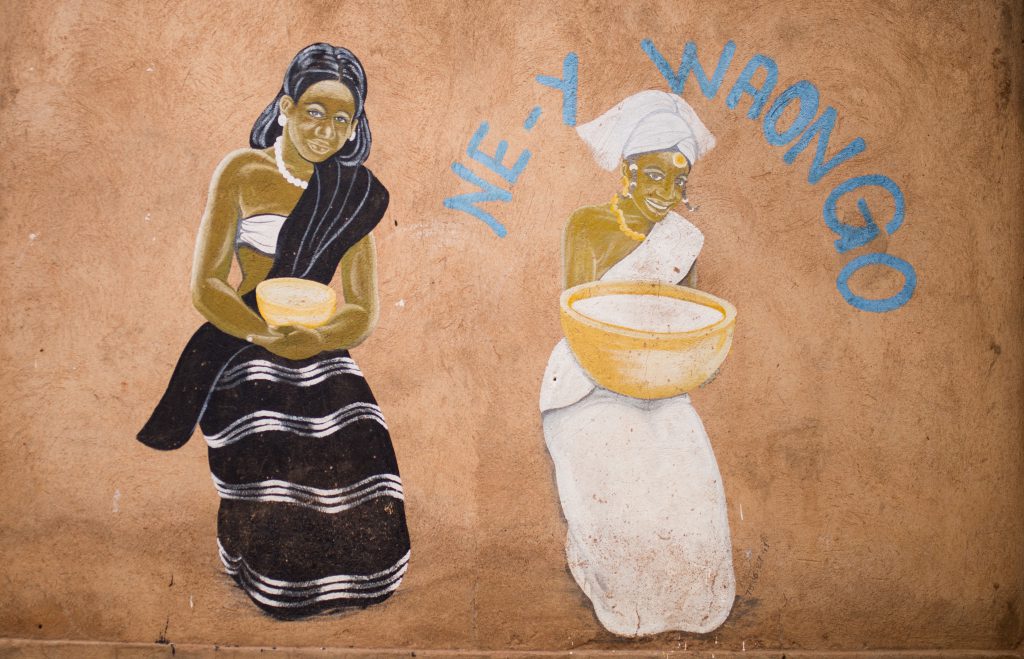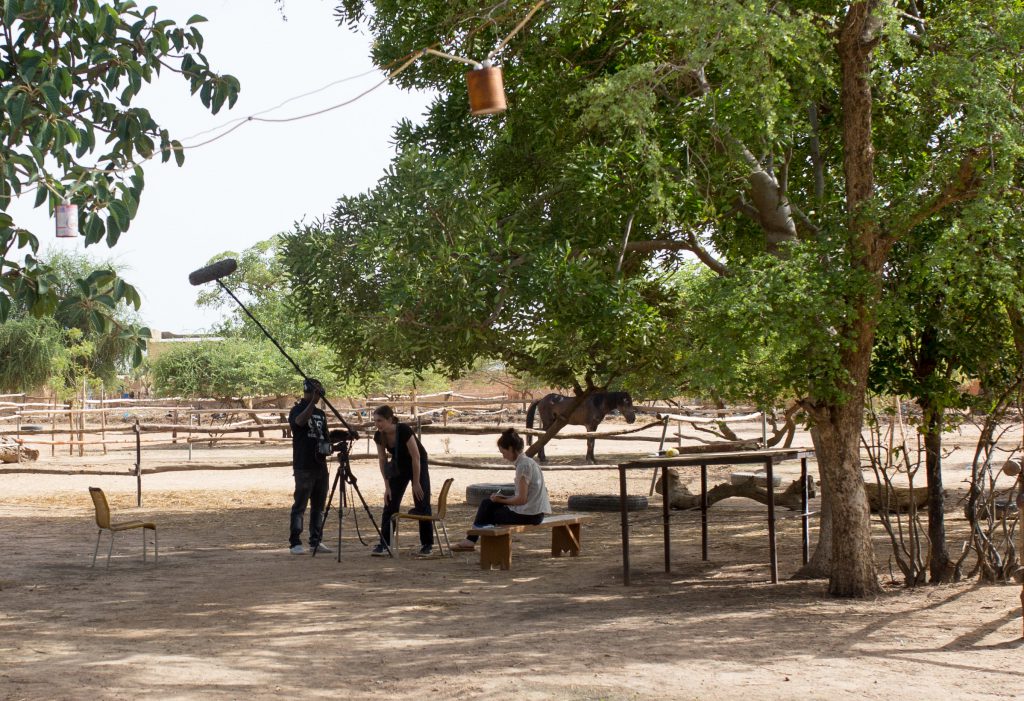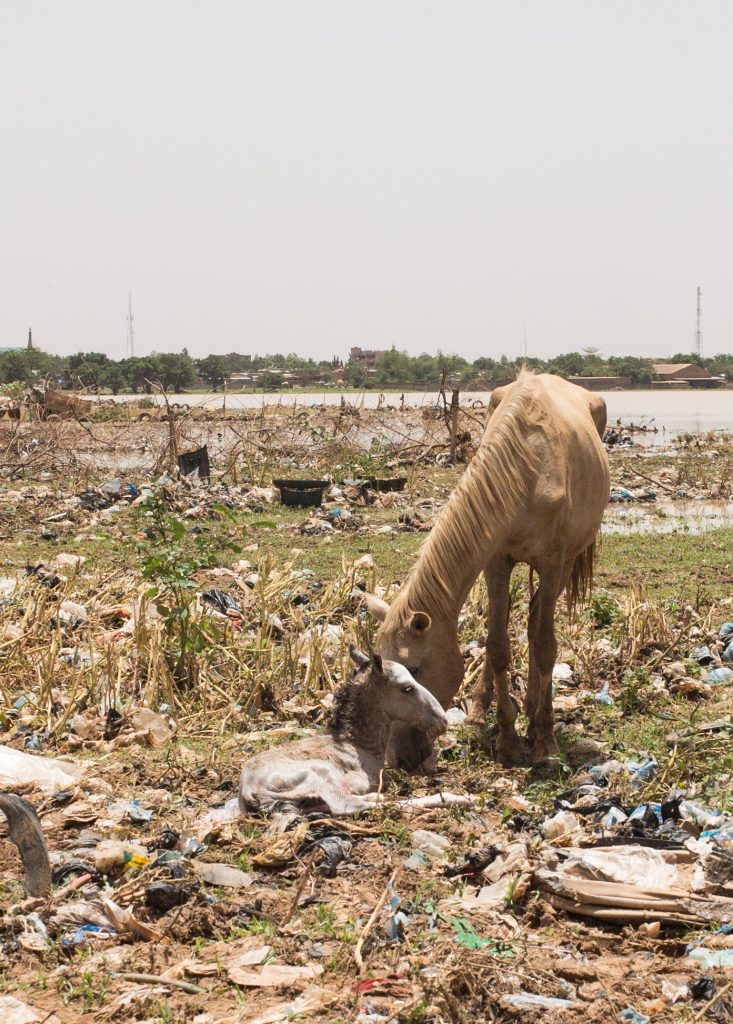Researchers Camilla Audia and Frances Crowley spent two weeks in Burkina Faso as part of NERC Innovation Placement fellowship on indigenous knowledge on weather and climate and were joined by artist Maeve Brennan as part of the King’s College London X Somerset House Studios small grant for artists and academics to work together to offer new critical perspectives on contemporary culture and society.
Ça va aller. When you land at Ouagadougou International airport knowing that your luggage is still in Paris, this is what the employees tell you with a smile. It means it’s going to be fine. It’s okay, it’s fieldwork in Burkina Faso, you anticipate that not everything will go according to plan. This is how our 12 very intense days of fieldwork started; with an overwhelming need for a clean shirt.

It got better, though! After a couple of days planning, having meetings in Ouagadougou and finally recovering our luggage, we left for the little village-y town of Yako, 100 km North of the capital and about 120km from the Mali border. We had purposefully selected five villages to do research and film around Yako, where we had worked before and where we could ask specific questions about how people predicted the weather. Rural farmers in Burkina Faso live on rainfed agriculture, which makes accuracy in forecast an extremely important factor to make informed decisions about what to plant and when to start sowing. Frances, Maeve and I arrived in Yako and refined our research questions with Inoussa, our facilitator. It was our usual qualitative, semi-structured interviews, with open-ended questions asked in French and translated in Mooré, the local language, by our brilliant interpreter. Inoussa is well-known in the area and this has biases, such as people sometimes giving him (and us) the “NGO talk”, or what they thought we wanted to hear. However, it has a lot of advantages too, like heads of households trusting him to interview wives alone and people generally talking openly about everyday challenges and possibilities.
What I’ve learned
The conversations were rich, the indicators were complex, varied and confirmed by iteration across the villages we visited. People are extremely connected to their surroundings; “any phenomenon standing out” – said an interviewee – “will catch your attention and you will seek to understand why it’s not repeating itself”. They observe animal behaviour, for example paying attention to how ants come and go in and out of their anthill; if they rush back inside, it is likely to rain soon. If they start coming out again, it was just clouds, but it won’t rain. Moon and stars are studied, too, although not everybody had this knowledge; their position, alignment, brightness, colour all tell different things. This knowledge is passed on organically from parents to children, “there is always something to be learned by those who are willing to follow and listen” – said the chief of Kouni, one of the villages. This information is part of the Mossi society and extremely local and contextualized. It seems to follow the patterns of the society itself, being grounded within the compound – the extended family – both because its components farm the same fields and because the trees and animals are usually around the house as well. There is also knowledge that is detained by specific people; “ce sont des initiés” – our facilitator tells us in French, insiders, specialized people, usually elders who are experts in traditional months, following a lunar calendar, and can decide on ceremonies marking the rhythm of the seasons. Ceremonies mark the beginning of the sowing season and celebrate the first big rain which will secure the seeds in the ground. They are feasts and consist in rich meals of cereals usually accompanied by a sacrificed animal, hence meat, and millet-based alcohol. They are prepared by each of the compounds but sometimes eaten outside the house, to get the good graces of “the visible and invisible beings”, including inviting passers-by and neighbours who may not have enough. The bigger, the richer the feast is, the better the harvest should be.

People trust their indicators; they do because they can observe the facts and confirm their reliability. They are able to look within their own compound and make decisions about what they see surrounding them. This is an interesting point, because generally they also seemed to distrust the scientific forecast from the national met office broadcasted by the radio. “The radio tells global tendencies” – said an interviewee, explaining that it usually isn’t specific enough to be true for their fields or village.

However, the Met Offices are starting to have a strong interest in indigenous ways of forecasting; our feeling so far is that they see it as beliefs that need to be triangulated with their scientific information. We are hoping that by putting forward this complex body of knowledge we can start bridging a gap between the two systems and start addressing hierarchies of knowledges.
What I would do differently
The co-production of our own work has followed an interesting process of negotiations between the needs of qualitative research, including following the pace and time of people and asking very open-ended questions, and the needs of filming, including proper light and good sound conditions and the necessity of having complete sentences rather than many bits of information. It was a great (and steep!) learning curve, which allowed us to get great data for the research and great footage.

I think this work deserved a lot more time in the field. While this is a common complaint for qualitative researchers, it is also something we have in common with film artists! We explored the possibility of doing our interviews first and then film specific questions and sentences, but we felt it would have been too time consuming and we would have lost the spontaneity element. I think we could have used more days in the villages to get landscapes and possibly film the rains! Halas, rain would also have meant we wouldn’t have been able to have people’s time since they would have been busy working in the fields. It’s a balancing act.
Highlights of the trip
We decided to explore a very important part of the Mossi culture when we got back to Ouaga: their man’s relationship with horses, which also responded to my passion for Burkinabe horsemanship and proved to be an excellent way of exploring surroundings of the city (on horseback!). While we were interviewing the warriors of the Mogho Naba – the King of Ouagadougou – one of their mares gave birth right in front of us. It was surreal, Maeve was able to capture it on film and the foal was born in a dry dam bed covered in plastic trash. I think these strong images will stay with me for a very long time and they say a lot about the reality of Burkinabé (possibly African) cities, climate change and soil quality.

The other personal highlight was being able to see the “Faux Départ” ceremony performed every Friday morning by the King of Ouagadougou, where his advisors and all other Kings convince him not to go to war with his brother who stole the small statuettes of power (fétiches).